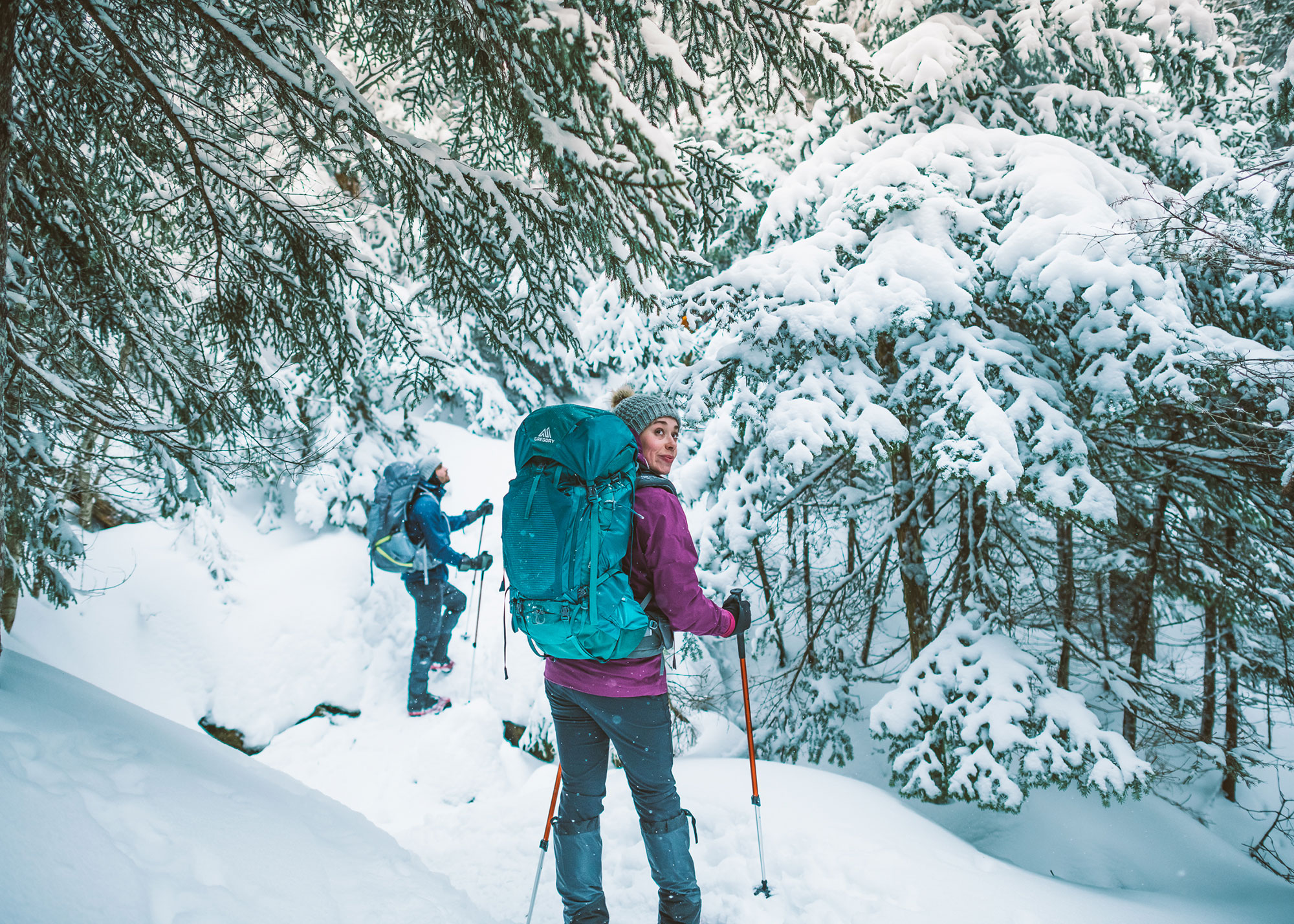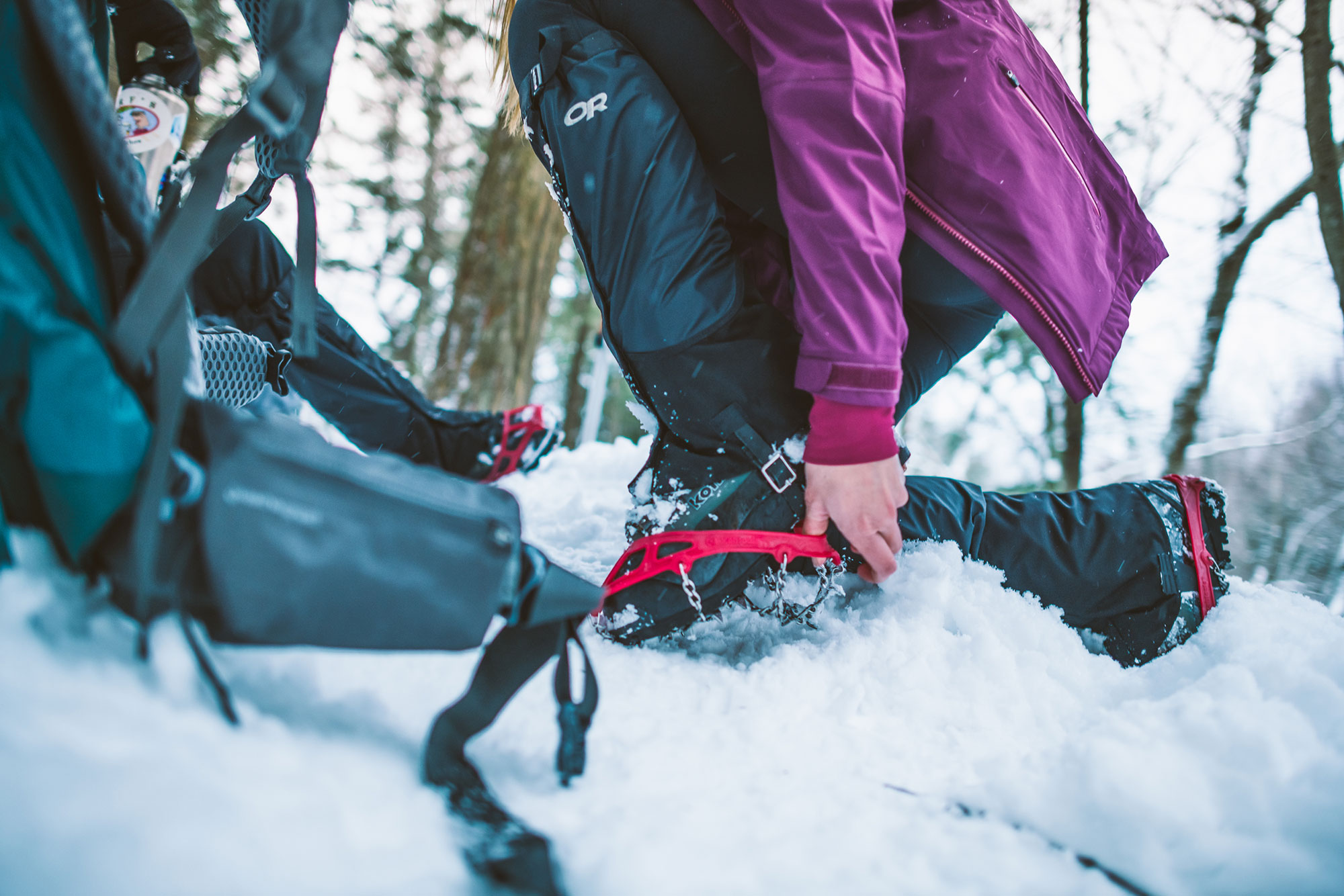Winter backpacking increases the level of risk that backcountry adventurers have to face. Chilly temps, avalanches, and moisture can turn a good day into a bad one fairly quickly, which is why it’s so important to carefully choose your winter gear. Packing these winter essentials may help you to stay insulated and prepared for winter threats that are lurking nearby.
 Waterproof Footwear
Waterproof Footwear
When the temperatures start to dip low, switching from your standard 3-season footwear to a waterproof trail runner like the Salomon Sense Ride 4 or a Gore-Tex boot like the Garmont Atacama GTX Mid Hiking Boot gives you extra protection and insulation from slush and snow for easy to moderate adventures. If you’re heading out on a particularly gnarly or technical trip, pick up a pair of the La Sportiva Nepal Cube GTX Mountaineering Boots. These boots are one of the market’s top picks for a technical, high-alpine, mountaineering environment. And they’re one of the warmest, and most-efficient pairs of boots that you’ll find.
Traction Devices
Don’t underestimate the power of traction devices while you’re backpacking in the winter. For slightly slippery environments, pick up a set of EMS Ice Talons (or crampons for extremely icy terrain). Carrying trekking poles and an ice axe adds extra control over volatile situations. Trekking poles keep you stable in slippery terrain while an ice axe may help you save yourself from slipping down a snowy pass.
Satellite Communicator
Since the winter backpackpacking season tends to be more dangerous than the rest of the year, carrying a two-way satellite communicator allows you to stay in touch with someone you trust just in case your plans don’t go as you hoped. One of the most compact and user-friendly two-way communicators is the Garmin InReach Mini. If you get yourself into a dangerous situation, having one of these is one of the best ways to trigger a rescue or to alert someone to the issue at hand.
 Avalanche Beacon, Probe, and Shovel
Avalanche Beacon, Probe, and Shovel
Any time you expect to adventure on or near snow-covered peaks, it’s vital to carry an avalanche beacon, a probe, and a shove (and to know how to use them). In the event that you trigger an avalanche, carrying these items may be your best chance at survival. An avalanche beacon like the Black Diamond Recon X is designed to identify your location incase you’re buried. A probe like the Black Diamond Quickdraw Tour Probe easily collapses down for convenient carrying, but when you need to use it, it takes just seconds to extend. And the Black Diamond Transfer Shovel comes with an extendable shovel, and a high volume blade profile to make digging your companion out more efficient.
An Extra-Warm Sleep Setup
One of the biggest challenges that winter backpacking creates is the cold. Without proper gear, it’s really easy to become uncomfortable in the backcountry, which is why swapping your 3-season gear out for 4-season options is usually a good strategy. If you’re unable to swap everything out, you may be able to get away with a sturdy 3-season tent like the Big Agnes Copper Spur as long as the rest of your sleep system is extremely warm. Keep in mind that having extra tent space in the winter just means that your body has to work extra hard to insulate it. So, it’s usually better to go with a smaller system.
Choosing the right winter sleep system is another essential part of the equation. Your sleeping bag requirements will depend on the environment. But having a warm option like the Big Agnes Blackburn 0-Degree Sleeping Bag is a must. Another important but often-overlooked part of the sleep system is the sleeping pad. You could have the warmest sleeping bag in the world but if your back isn’t insulated from the ground, it won’t matter. This is why adding a sleeping pad with a high R-value like the Sea to Summit Ether Light XT or the Thermarest NeoAir XTherm is ideal.
Winter backpacking can be extremely challenging. So, when you’re first getting started, consider taking a few trips with few risks. Choose low-grade terrain to mitigate the risk of avalanches. Camp a few miles away from your car just incase you need to bail. And make sure to be prepared for everything along the way.
Mary Beth Skylis
Mary Beth began her journey in the outdoors while thru-hiking the Appalachian Trail in 2015. She soon went on to backpack the Colorado Trail, and part of Nepal's Annapurna Circuit. Today, she resides in North Carolina where she can commonly be found rock climbing, surfing, or backpacking. Some of her recent work can be found in Outside and Backpacker Magazines.




